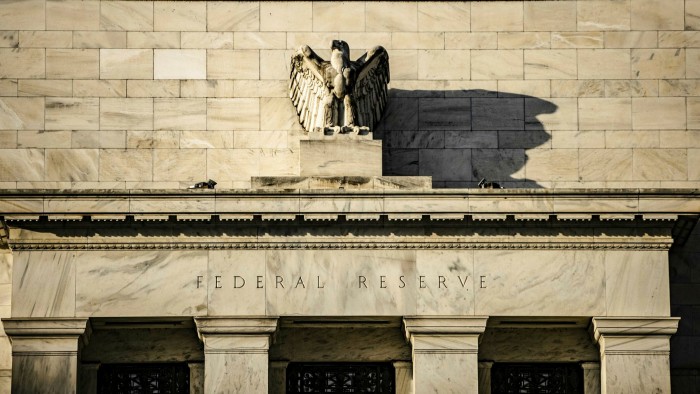The ‘crowding out’ risk to the economy

Roula Khalaf, Editor of the FT, selects her favourite stories in this weekly newsletter.
The writer is group chief economist at Société Générale
There are solid arguments favouring fiscal policy expansion as economies emerge from the damage inflicted by the Covid-19 pandemic.
There is a clear interest in protecting businesses and households from the bankruptcies and job losses that would otherwise result from lockdowns. Fiscal expansion can also support the green and digital transitions of economies.
Debt sustainability, it’s often argued, is not an issue as long as interest rates remain well below growth rates. And, judging from central bank guidance, significantly higher real rates are not on the cards any time soon.
In this environment, the prospect of governments “crowding out” other borrowers by competing for funding, pushing interest rates higher and squeezing out private investment might seem a distant concern. But even in such a context, crowding out can be a risk and it is one investors should pay attention to.
Even before the Covid crisis there was concern that ultra-low interest rates, maintained for a long period of time, could become less effective and perhaps even turn contractionary for the economy. This could occur by channelling funds to otherwise unproductive companies, so-called zombification, or by encouraging excessive financial leverage in the search for returns, fuelling unsustainable asset price bubbles.
A further concern was that low rates, by squeezing the lending margins of banks, could reduce the incentive for these institutions to lend, ultimately weakening the transmission of monetary policy.
Central banks can still help, by creating further room for fiscal policy by absorbing debt issuance through their asset purchase programmes known as quantitative easing.
However, this is where unintended competition for funding may arise. When QE is conducted by the central bank purchasing a government bond from a commercial bank in exchange for bank reserves, this merely amounts to swapping one safe asset for another.
When the central bank buys the bond from outside the banking system such as a pension fund, it hands cash to the seller of the bond and this inevitably ends up as a deposit in the commercial banking system. These ultimately end up as reserves at the central bank.
Individual banks may try to avoid more deposits by measures such as offering unattractive rates but the system as a whole cannot avoid them.
As such, in this case the size of the commercial bank balance sheet has increased with more deposits on the liability side and more reserves on the asset side. Absent any increase in bank capital, this mechanically increases the leverage ratio of banks.
As banks are subject to maximum leverage ratios, hitting up against these would force banks to cut lending to the private sector. For the aggregate economy, capital market lending channels could provide offset. However, not all borrowers have access to capital markets.
Both the Federal Reserve and the European Central Bank have offered banks some relief in the context of the pandemic on the issue, excluding, for example, certain central bank exposures from the calculation of leverage ratios. Such macroprudential easing was also adopted in other areas, including the lowering of capital requirements. Combined, these measures sought to allow banks more room to increase lending to the private sector.
While banks have played an important role during the pandemic, they have not yet engaged the type of aggressive lending behaviour that would have lowered capital ratios to the levels permitted by the macroprudential easing. This may be partly due to lack of loan demand, but also a certain prudence at individual banks.
Such prudence from the perspective of individual banks makes sense, even if theoretically better economic growth outcomes could be achieved if all banks were to lower capital ratios and lend even more. This paradox of capital thrift is something that macroprudential models would do well to account for.
Once economic recovery gains momentum, it’s not hard to see how policymakers could be tempted to opt for macroprudential measures instead of interest rate hikes to tame risks of overheating. This could include tightening bank capital and leverage ratios, capping loan-to-value ratios on real-estate lending or introducing higher collateral requirements for non-banks. This would create room for central banks to maintain large balance sheets and keep government borrowing costs low.
Crowding out effects, reducing funding available for the private sector, would, however, still materialise and ultimately weaken the recovery.
Comments